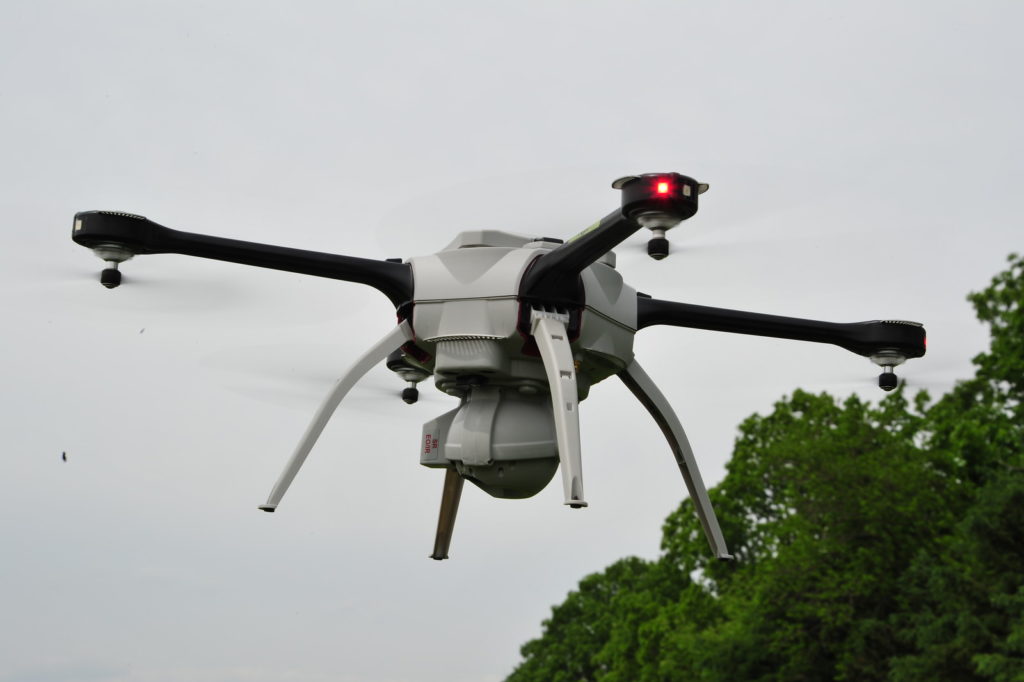Estimated reading time 4 minutes, 51 seconds.
Transport Canada data on unmanned aerial vehicles (UAVs) flown in or near controlled airspace in 2018 show that this remains a persistent problem, even as the federal government continues to work on updated regulations.

Interim regulations in effect since last May prohibit UAVs inside controlled or restricted airspace, and require them to be flown at least 5.6 kilometres away from any area where aircraft take off or land. These regulations also require unmanned aircraft to be at least 1.9 kilometres away from heliports.
UAVs must be flown only during daylight hours, always in line of sight, below 90 metres above ground level (AGL), and at least 30 to 76 metres from vehicles, vessels and the public. The only exception is for operations from a field or an event approved by the Model Aeronautics Association of Canada.
Last summer, Transport Canada initiated two pilot projects involving emergency responders and several private companies which operate UAVs beyond visual line-of-sight (BVLOS) in an attempt to collect safety information to help regulators understand the challenge.
“Transport Canada has indicated that they have now completed a few operational tests and will continue their trials,” wrote aviation lawyer Auriol Marasco, a partner in the Toronto law firm Blake, Cassels & Graydon LLP, in a Jan. 3 website article. “The industry is anxiously awaiting the results as they will provide key indications as to how the BVLOS operations will be regulated.”
Marasco also said Transport will be releasing updated regulations for UAV operations within visual line-of-sight (VLOS). Updated rules were expected by the end of December, but a Transport Canada spokesperson told Skies in a Jan. 4 email that the department “continues to work on getting the final regulations published . . . as soon as possible in 2019.”
Meanwhile, the department’s Civil Aviation Daily Occurrence Reporting System (CADORS) for last year–which could be amended as any year-end reports are incorporated–includes at least 123 reports involving UAVs not in compliance with the regulations. In some cases, the UAV was close enough for pilots to identify the make, model, and even estimate its weight.
All major scheduled and charter carriers have filed reports about encounters at various altitudes, some within close proximity to runways.
In June, the crew of an Air Inuit Boeing 737 on final approach 3.7 kilometres from Montreal/Pierre Elliott Trudeau Airport reported an orange UAV at some 360 metres AGL. At the same airport three months earlier, the tower advised an aircraft taking off that there was a UAV approximately 900 metres from the runway threshold at about 200 metres AGL.
Quebec accounted for “only” eight CADORS reports in 2018. Given their traffic volumes, Ontario, British Columbia and Alberta topped the list with 48, 37 and 16 reports, respectively.
One of the B.C. reports came from the crew of an Air Canada Airbus A321 on final approach to Vancouver International Airport. Descending downwind, they reported a UAV “whizzing by” at approximately 7,000 feet AGL.
In another notable incident, the Vancouver Harbour Flight Centre (VHFC) reported a UAV some 200 feet above the floatplane docks as a Seair Seaplanes aircraft was taxiing out for departure. The only other detail provided in the CADORS was that “the UAV operator was located and counselled by a VHFC representative” and that the UAV had been landed.
Reports were filed by commercial, corporate, private and military fixed-wing and helicopter pilots as well as members of the public. In most cases, the CADORS notes “no impact on operations.”
However, that wasn’t the case last February with a Cessna 172S registered to B.C.-based Chinook Helicopters. On a training flight from Abbotsford to Chilliwack, as it turned on right base to Chilliwack, the pilot reported that the leading edge of his left wing had been struck by an unknown object. He landed without further incident and police were advised. No UAV debris was found but blue paint was evident on the Cessna’s damaged area.
It was a situation that clearly could have been much worse.








